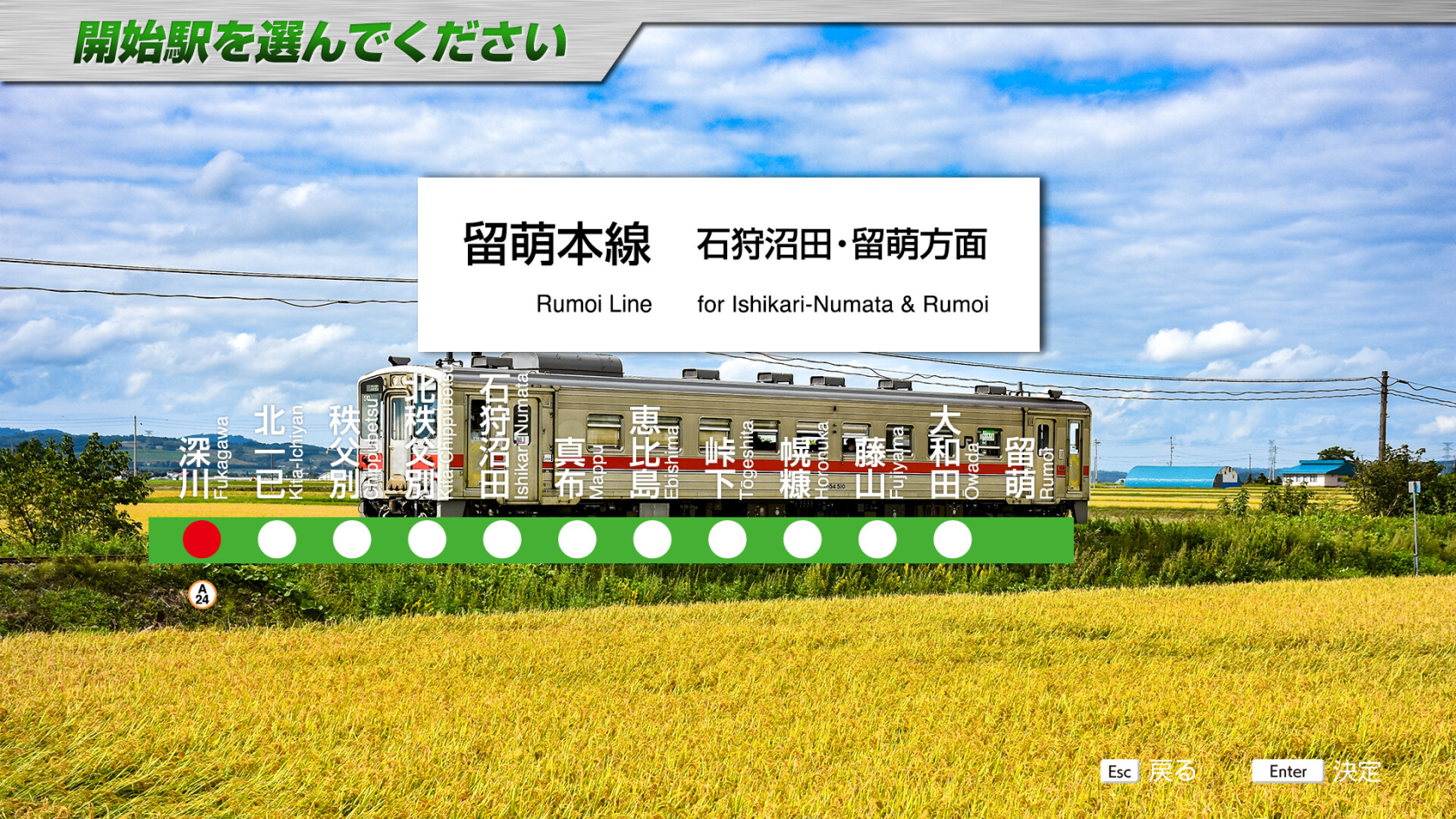Rumoi Line (JR Hokkaido)
Introducing
The Rumoi Line is a 14.4 km long JR Hokkaido line connecting Fukagawa Station in Fukagawa City, Hokkaido to Ishikari-Numata Station in Numata Town, Uryu County, Hokkaido.
The line used to run 66.8 km to Mashike Station in Mashike-cho, Mashike-gun, Hokkaido, but the Rumoi - Mashike line was discontinued in December 2016, followed by the Ishikari-Numata - Rumoi line in April 2023, leaving only Fukagawa - Ishikari-Numata as the only remaining line.
In the past, the Rumoi Line was serviced by the express train "Mashike," which runs directly from Sapporo Station, the express train "Rumoi," which runs directly from Asahikawa Station, and the "SL Suzuran" steam locomotive, a C11 class steam locomotive. As of March 2024, only seven regular trains per day operate on the in-bound line and out-bound lines.
Departing from Fukagawa Station, the train heads north through the Ishikari Plain, crossing the Ebishima Pass with its series of large curves and gradients on its way to Rumoi Station. Along the way, you will be able to experience Hokkaido's unique character in many places, such as Kita-Chippubetsu Station with its wooden platform and Ebishima Station adjacent to the station building where the TV drama "Suzuran" was set.
This DLC includes the in-bound line and out-bound lines between Fukagawa and Rumoi, including the discontinued section. We have decided to create this DLC not only as a driving experience, but also to preserve the scenery and memories of the discontinued section in the form of a simulator. We hope you will enjoy driving a line that you will never ride again with this DLC.
Key data
- Line Length: 50.1 km
- Number of stations: 12
- Safety system: ATS-Dn / ATS-Sn
- Train model: KiHa 54 series (1 car)
- Max speed: 85 km/h
- Max speed after signals:
- Reduced speed (green/yellow): 65 km/h
- Caution (yellow): 45 km/h
- Speed restriction (yellow/yellow): 25 km/h
- Routes:
- Rumoi ~ Fukagawa (4920D) : "Local" type - 9 stations - 50.1 km
- Rumoi ~ Asahikawa (4922D) : "Local" type - 12 stations - 50.1 km (can't go above Fukagawa)
- Rumoi ~ Fukagawa (4924D) : "Local" type - 10 stations - 50.1 km
- Rumoi ~ Fukagawa (4926D) : "Local" type - 10 stations - 50.1 km
- Fukagawa ~ Rumoi (回5921D) : "Not in service" type - 2 stations - 50.1 km (direct train)
- Fukagawa ~ Rumoi (4921D) : "Local" type - 5 stations - 50.1 km
- Fukagawa ~ Rumoi (4923D) : "Local" type - 10 stations - 50.1 km
- Fukagawa ~ Rumoi (4925D) : "Local" type - 11 stations - 50.1 km
- Fukagawa ~ Rumoi (4929D) : "Local" type - 10 stations - 50.1 km
- Automatic announcements: Yes
- Conductor announcements: No
- Driver announcement (pointing-and-calling): Yes
Features
This line can be run in both directions. The timetable is displayed directly in the cab.
When heading towards Rumoi, about 1.8km before reaching Mappu station, you can see a fox crossing the track.
ATS-Dn is only used at the exit/entry to Fukagawa station, the rest is on ATS-Sn.
Stations list
| Station name |
Japanese name |
Distance (km) | JRETS connections |
|---|---|---|---|
| Fukagawa | 深川 | 0 | |
| Kita-Ichiyan | 北一已 | 3,8 | |
| Chippubetsu | 秩父別 | 8,8 | |
| Kita-Chippubetsu | 北秩父別 | 11,2 | |
| Ishikari-Numata | 石狩沼田 | 14,4 | |
| Mappu | 真布 | 17,8 | |
| Ebishima | 恵比島 | 20,7 | |
| Tōgeshita | 峠下 | 28,3 | |
| Horonuka | 幌糠 | 34,5 | |
| Fujiyama | 藤山 | 40,0 | |
| Ōwada | 大和田 | 44,2 | |
| Rumoi | 留萌 | 50,1 |
Movie
Useful links
Wikipedia: https://en.wikipedia.org/wiki/Rumoi_Main_Line
Driver's guide and timetables: https://docs.google.com/spreadsheets/d/1EAuUIUOkjAcV558y-fTwY7o84DDYdJfihv6WI9lswqU/edit#gid=965613808

